Whether you have a postage stamp-sized lot, a patio, or an apartment balcony, you can still enjoy growing vegetables and fruits for the table as well as ornamental blooms for your flower arrangements.
Starting from seed and using repurposed containers can keep costs down, and using vertical growing arrangements and choosing dwarf varieties optimizes square footage.

We link to vendors to help you find relevant products. If you buy from one of our links, we may earn a commission.
This article focuses on how to make the most of a small outdoor growing space, providing inspiration and advice on implementation.
Here’s what’s in store:
What You’ll Learn
Let’s get this garden growing!
Design Preparation
Before you can start planning what you want to grow, you first need to determine the sun exposure of your intended garden space.
If it’s southern or eastern, you can grow sun-loving plants like herbs, vegetables, and flowering annuals and perennials.
For northern or western exposures, you’ll need to choose species like coleus, ferns, and hostas, that can thrive in low light for most of the day.
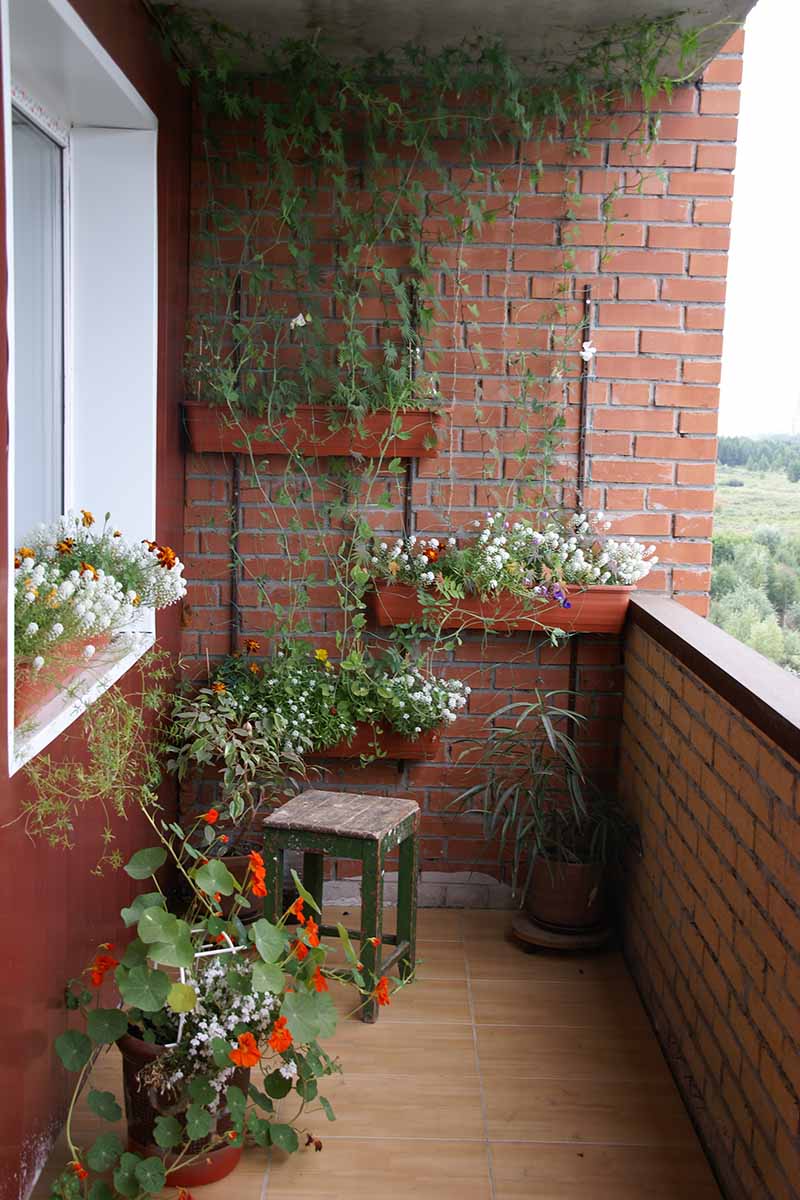
If you live in an apartment, consult the manager to determine crucial factors like balcony weight capacity and whether or not you can leave pots outdoors year-round.
Cultivating flora in communal settings requires extra care and consideration.
When you’re gardening on a balcony, take steps to prevent dirt, debris, water, and pest treatments from spilling onto the residents below.

Once you know the exposure and any rules you must follow, measure your growing space and do your best to draw it on graph paper.
With a visual representation in hand, think about your vision for the space.
Does it include seating? A walkway? Do you want to fill it with herbs and vegetables, or flowers? Will it be informal and sprawling or neat and orderly?
Successful small space gardening requires growers to turn their dreams into reality by taking a mathematical approach, paying strict attention to the mature dimensions noted on seed packets and plant tags.
Did you know that one zucchini plant can take up 16 square feet of soil? Or that you can harvest 16 to 18 carrots out of every square foot of growing space?
Choosing compact cultivars of your favorite species can help you conserve space.
Once you decide what you’d like to grow, you can make scale models of plants and outdoor accessories on paper before heading to the garden center.
Small Space Gardening Styles
Options for growers with small plots or in apartment settings include beds and borders, containers, square-foot gardening, and vertical planters. Let’s discuss each of these methods.
Beds and Borders
Don’t let a small patch of ground fool you. Provided you observe mature dimensions and don’t overplant, you may be able to grow a few decent sized brassicas, like broccoli, cabbage, and cauliflower.
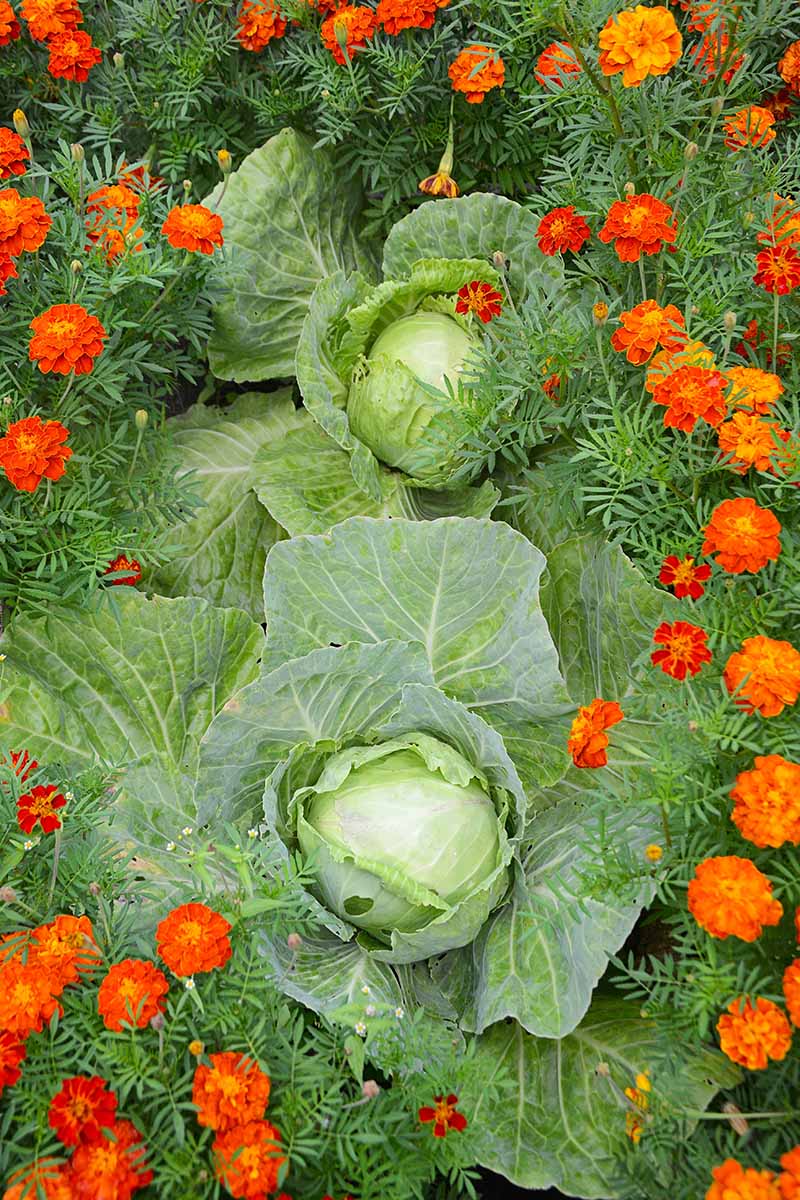
Surround them with marigolds for a decorative and functional pest deterrent.
If your space is limited to a narrow strip around a patio, consider sowing annual herbs like basil, chives, cilantro, and oregano for a handy kitchen garden.
Measure the space you have available and choose compact cultivars where possible. Or you could grow perennial flowers in the ground and use pots for your herbs and vegetables.
Containers
One of the easiest ways to establish a garden quickly is container gardening.
If you’re in a region that doesn’t freeze, you can fill them with perennials and dwarf shrubbery to enjoy year-round.
You can also grow a wide range of vegetables in containers.
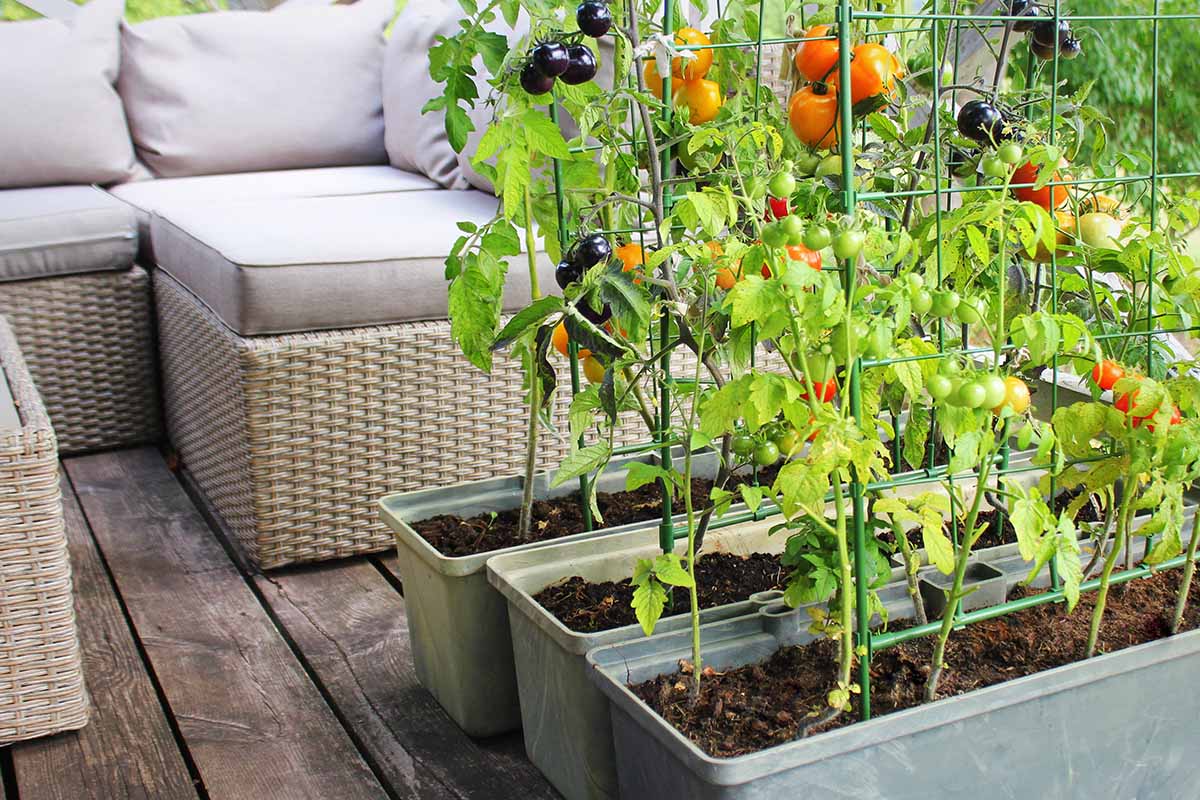
If your region freezes, select weatherproof pots if you intend to store them outdoors during the off-season.
When selecting vessels, you’ll find many options, including clay, concrete, fiberglass, plastic, resin, stone, and terra cotta.
Concrete and stone withstand freezing, but their weight may be problematic for balcony dwellers.

Fiberglass, plastic, and resin may crack in freezing temperatures, but are lightweight and excellent choices where weight is a consideration.
Unless you are growing your plants in the shade, it’s best to avoid metal because it can become very hot. And wood products should be well-sealed to inhibit rotting.
Learn more about how to choose containers in our guide.
As a rule of thumb, a container should be two to four inches wider than the plant you wish to grow, with a depth that’s half the plant’s height. There should always be one or more drainage holes in the bottom.
Recycling household items is a time and money saver, but avoid containers that once held toxic chemicals and those with flaking or otherwise deteriorating surfaces, especially if you are growing edible crops.
Items that are easy to repurpose include: bird baths, cinder blocks, mailboxes, rain boots, tea kettles, tires, tool boxes, and watering cans. Be sure to drill a hole in the bottom of any eclectic vessel you use to facilitate drainage.
A convenient way to grow lettuce, kale, spinach, or other greens is in a raised salad box.
Set one or more drawers from a dresser on a table or other platform, fill them with soil, and you’ll enjoy not having to bend down when you tend your plants.
You could even repurpose an old wheeled item, like a cart, wagon, or wheelbarrow.
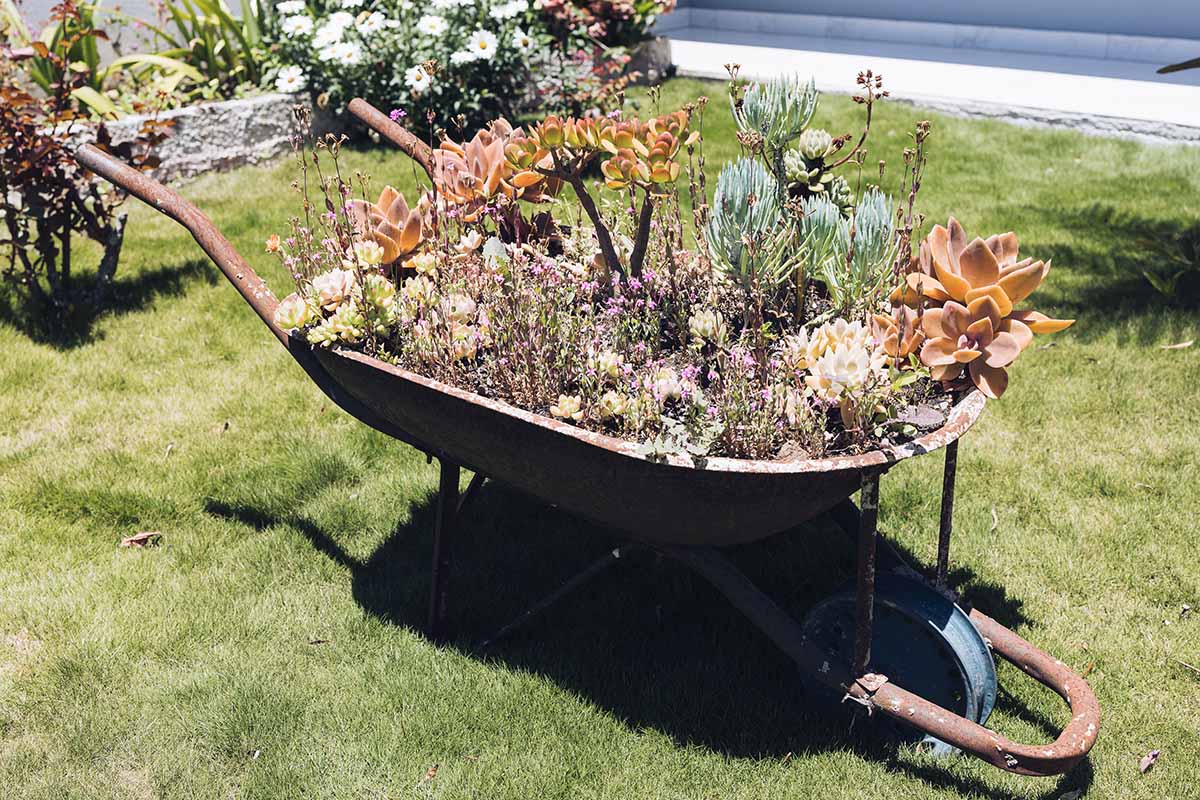
Not only are these fun ways to display a beautiful arrangement of colorful flowers, they are also movable vessels.
Once you decide what you’d like to grow, you can use the mature dimensions of the plants to determine the container sizes you’ll need. Use your graph paper to decide how to group the pots in your space.
For example, if you have a long, narrow balcony, you may want to line your pots up on the floor along the railing. Alternatively, if your apartment permits, you may install trough planters directly on the railing.
Rail-mounted planters and window boxes offer gardeners the opportunity to showcase trailing flora, like ivy, petunias, and sweet potato vines, while creating a living privacy screen.
Another option is a rolling planter to take advantage of the sun as it moves across your patio, giving your veggies every available ray, or to move an overheated snapdragon out of the afternoon sun to encourage it to last just a little bit longer.
When planting, use a good quality, all-purpose, moisture-retentive potting soil for flowers and vegetables, or select one specifically formulated for the plants you wish to grow. For example, if you wish to grow succulents, choose a cacti and succulent medium.
If you are grouping multiple plants in a single container, ensure that they all have the same cultural requirements for soil, sun, and water.
Pots dry out quicker than garden soil, so monitor them daily during the growing season and water them as needed per seed packet and plant tag instructions.
Be sure to read our guides to growing herbs and vegetables in containers to learn more.
Square Foot Gardening
Created by American gardener Mel Bartholomew, square foot gardening is a crop planting system that uses only 20 percent of the standard gardening space for the same plants, by sowing in square-foot increments instead of rows.

It’s a raised bed, no-till system that requires minimal water and maintenance, and inhibits weeds through continuous planting.
Bartholomew’s method makes it possible for gardeners with even the smallest spaces to sustain their families with fresh produce.
Making your own raised bed isn’t difficult. You’ll be surprised by how many vegetables and flowers fit in a few square feet, especially when you choose compact varieties. Use bricks, cinder blocks, or wood to build a bed – then fill it with soil.
Square foot gardening is perfect for growers who want to harvest their own bush beans, leaf lettuce, peppers, tomatoes, and other vegetables with a more vertical than horizontal growth habit.
Use your graph paper design to determine the number of square feet you have available for cultivation.
Our square foot gardening guide has more information.
Vertical Planting
If you barely have room for a chair on an apartment balcony, vertical planting may be your best option.
With this method, plants are stacked vertically instead of spreading horizontally, requiring very little ground space and affording a substantial crop yield.
This vertical planter from Outland Living requires only six square feet of ground space to supply 10 linear feet of growing area in four food-grade bins.
Outdoor Living Vertical Planter
In addition to saving space, this device saves you having to bend down to tend your plants.
You can find the Outland Living vertical planter available via Walmart.
From herbs and microgreens to strawberries and tomatoes, vertical gardening is a high-yield space saver. Choose compact varieties for best results.
Use your design as a guide to how much floorspace you can devote to vertical planters.
In addition to freestanding apparatus, you can also use existing fences and walls for vertical growing that require little to no floor space.
A cheap and whimsical way to add style to an outdoor space or wide window ledge is to use old rain boots and shoes as planters for colorful flowers. The quirkier the better.
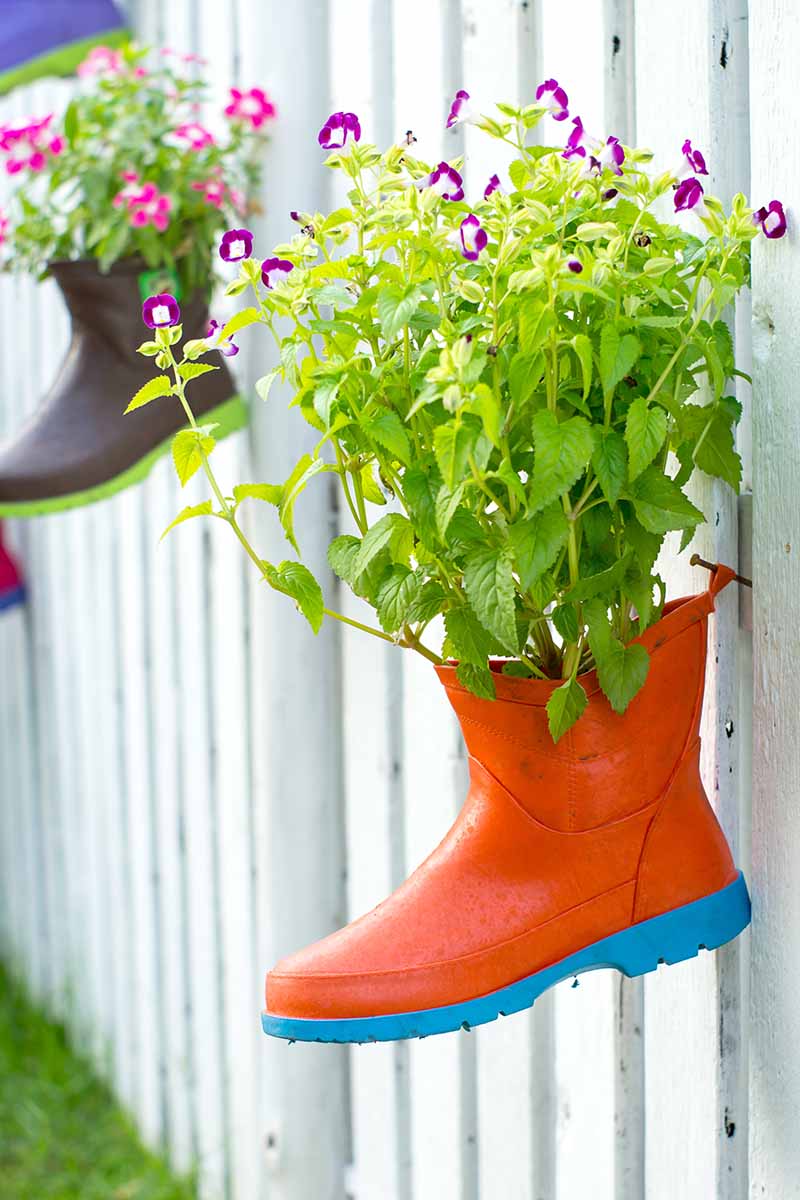
Mount them on a wall or fence, or line them up in rows on a shelf. Why not try this idea with your kids?
You can also buy or recycle a canvas shoe organizer.
Install a strip of wood on your wall, attach hooks or nails, and suspend the organizer. Fill the pockets with soil for a handy herb garden right outside your door.
Don’t forget to check with your apartment manager, if applicable, before installing a permanent fixture!
Our guide to vertical gardening has more details.
Get Growing!
With a plan in place, it’s time to assemble the necessary tools as well as your containers and suitable potting soil, if using. Sanitize all pots with a solution made from nine parts water to one part bleach. Rinse well and air dry.
If you’re growing in the ground, work the soil to a crumbly consistency to a depth of eight to 10 inches before planting.
Enrich it as needed with organic matter like well-rotted compost, which is especially beneficial for vegetable growing.
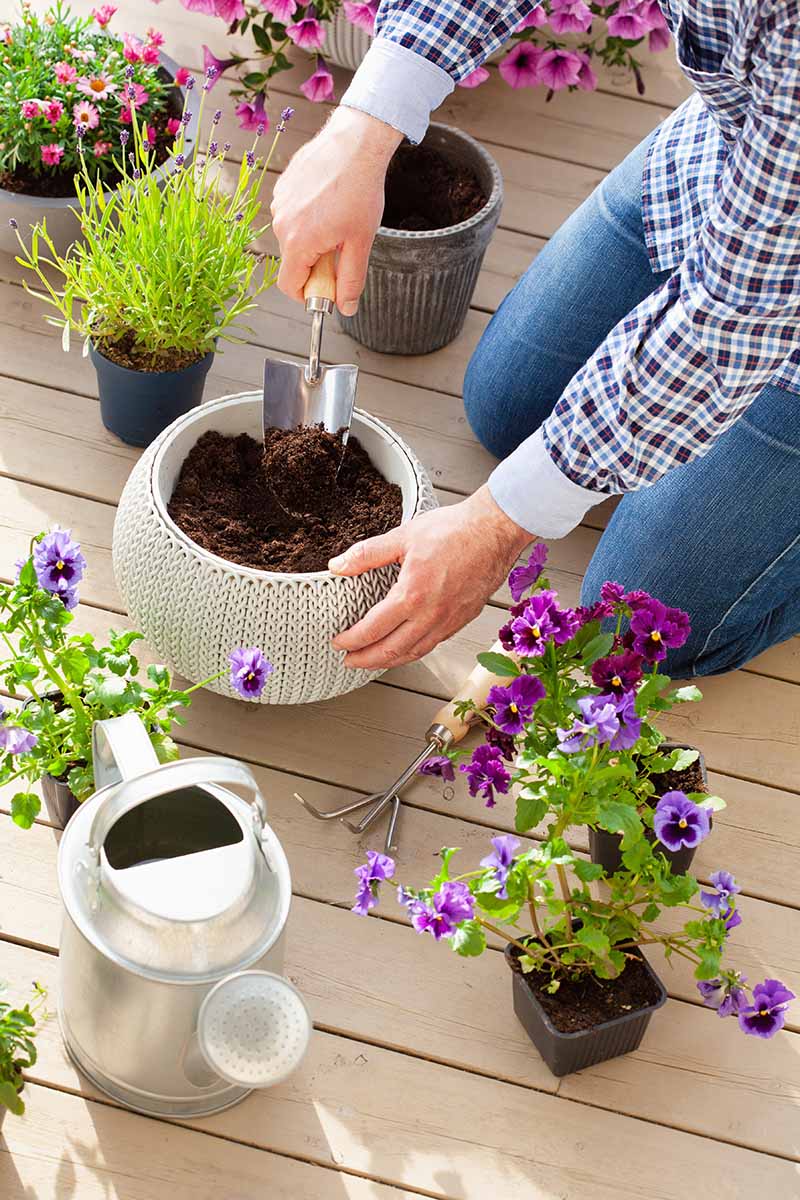
You can conduct a soil test through your local agricultural extension to determine the pH and nutrient level of your soil, and amend accordingly. Even small gardens can yield abundant harvests under optimal conditions.
If you purchase nursery starts, note their depth in the original containers and replicate it when transplanting them into your pots or garden beds.
Alternatively, seeds generally offer the most cost effective way to begin. If your region has a short growing season, consider starting seeds indoors to get a jumpstart on blooming and fruiting.
Once the seedlings have two sets of true leaves and all danger of frost has passed, acclimate them to the outdoors for a few hours a day. After a week, keep them outside for the growing season.
No Space Too Small
Have we inspired you to get started with small-space gardening?
I’ve seen old sinks, toilets, and wash tubs repurposed as planters and a friend’s daisies grow out of a floppy old work boot her dad once wore.
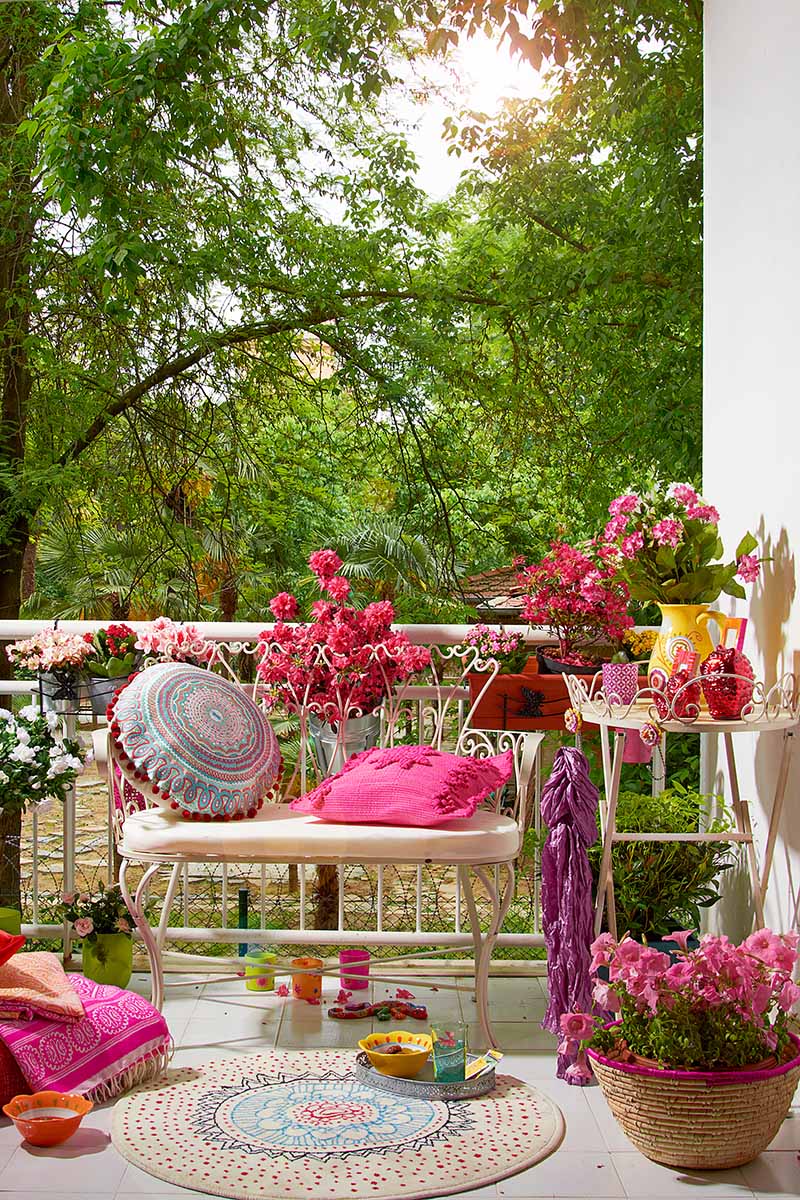
Remember, just because a space is small doesn’t mean it lacks the potential to be green, colorful, and/or productive.
When a colleague of mine moved into an apartment with a small patio, she went into the neighboring woods and collected several buckets of stones.
After obtaining the manager’s permission, she installed a strip of plastic landscaping border to contain the stones along the patio perimeter. Then she set an assortment of thrift shop containers on the stones and filled them with cheerful blooms.
With a vision, structural solutions, soil, seeds, plants, and creative containers, you can soon have a little garden space to call your own.
How does your small-space garden grow? Tell us about it in the comments below.
If you found this article helpful and want more creative garden design ideas, we recommend the following:

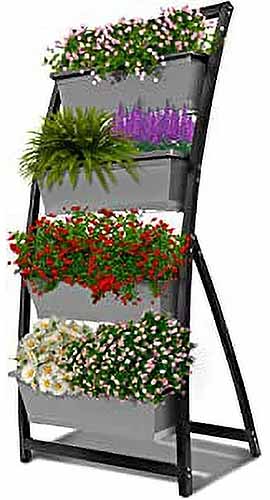
I’m a newbie with 3’x20′ area…need help
Though it’s relatively narrow, this sounds like a great space to start a garden! Where are you located, what type of soil do you have, and what kind of sun does the area receive? Would you like to grow ornamental or edible plants, or a combination of both? With some careful planning based on your local conditions, you’ll be ready to start selecting plants. And we’re happy to help however we can!
I have a small patio area that has a Hwy about 15-20 from us. Most of the area is cement with about 1-2 feet of edging that’s rocks. Then it’s surrounded by an old privacy fence. I can only do containers but I really love flowers and would love to enjoy a beautiful place to sit outside. Help, please!!
Hello Raelene! It may not look like it now, but you have a really wonderful opportunity to brighten up this area and create your own mini-oasis. I’m glad for you that you’re going to try. The first thing to establish is going to be whether the plants you grow will be receiving full sun, part shade, or all shade. If you’ve got mostly shade, the houseplants and maybe some shade-loving perennials will be your best bet. If you have some sun, or full sun, that opens up more possibilities. I imagine that privacy fence might offer a good opportunity to… Read more »